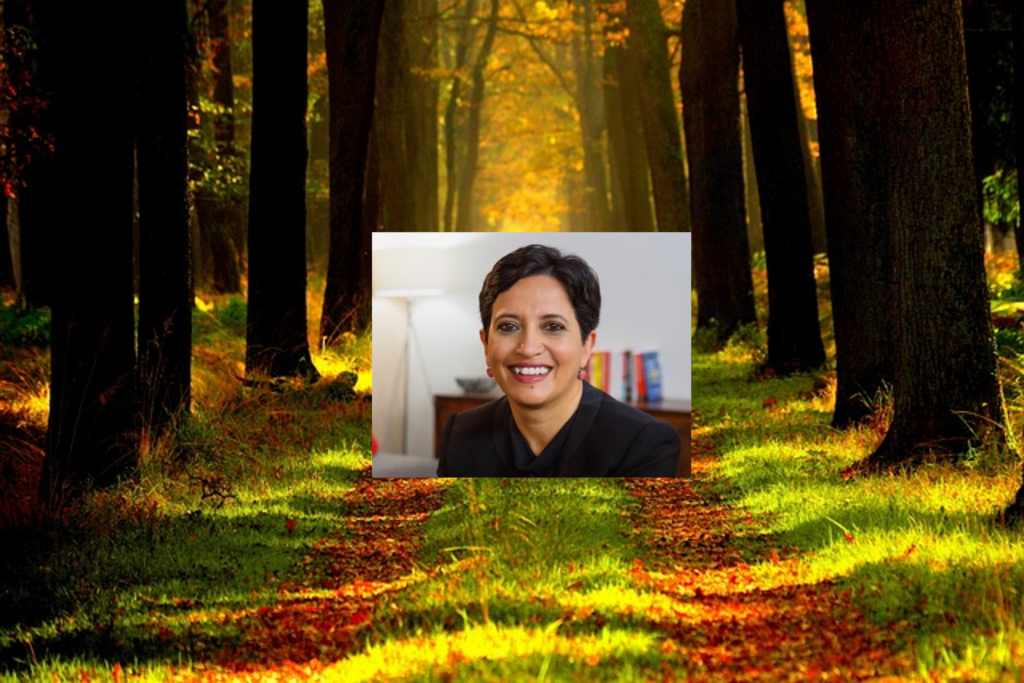Entrepreneur Journeys
The Startup Velocity Question: What Hinders Acceleration in VC Funded Companies?

I have been running 1Mby1M since 2010. I find myself saying to entrepreneurs ad nauseam that VCs want to invest in startups that can go from zero to $100 million in revenue in 5 to 7 years.
Startups that do not have what it takes to achieve velocity should not be venture funded.
Experienced VCs, over time, have developed heuristics to gauge what constitutes a high growth venture investment thesis.
>>>1Mby1M Udemy Courses with Sramana Mitra: Bootstrapping

Over the course of two years, we have released over 70 courses on Udemy with the aim to democratize entrepreneurship education at scale globally. This series of posts aims to help you find the one you need easily and provide you with discount coupons.
>>>Unicorn in the Making: Veeam CEO Ratmir Timashev (Part 1)
You have read some of the Unicorn Series pieces already: Tableau, FireEye, RightNow, Palo Alto Networks and several others. Here’s a company that gets little coverage but is performing at Unicorn levels.
Sramana: Ratmir, let’s start our discussion by reviewing your background. Where are you from? What are the roots of your entrepreneurial journey?
Ratmir Timashev: I was born in Russia in 1966 in the mountains between the European and Asian region of Russia. I studied physics in Moscow and I attended the top science school in Russia. I was working on my PhD when perestroika came into being. Science was very prestigious under the Soviet Union and when perestroika happened, all that changed. Government funding suddenly stopped. The economy collapsed and science did not make sense. A lot of my friends who were studying science went to work in other areas. >>>
Featured Videos
Can 1M/1M Help Me Raise Money?
How Does 1M/1M Democratize Entrepreneurship Education?
How Does 1M/1M Democratize Management Consulting?
When Is The Right Time To Join 1M/1M?
Can 1M/1M Help Me With Business Development?
Can 1M/1M Help Me With Market Sizing?
Can 1M/1M Help Me Validate My Product?
Will I Have Private 1-on-1 Sessions In 1M/1M?
How Does 1M/1M Help Entrepreneurs Connect With Silicon Valley?
Mentoring or Consulting?
Why Does 1M/1M Charge $1000 a Year?
Why Does 1M/1M Partner With Local Organizations?
Why Don\’t Mentoring Networks Work?
Why Is It Important To Study With 1M/1M Now?
Dan Stewart Story
Vikrant Mathur Story
Building a Global Technology Company from Colombia: Ricardo Villadiego, CEO of Easy Solutions (Part 1)
We seldom see global technology companies being built out of Latin America, so what Ricardo and his team have been able to accomplish is very exciting. And to think that they are building a fraud prevention company out of Bogota, Colombia is truly impressive.
Sramana: Ricardo, let’s start at the very beginning of your story. Where were you born and raised?
Ricardo Villadiego: I was born in Cartagena, Colombia which is a small city in the north of the country. I was raised there until I was 15 and then I moved to Bogota to study to become an engineer. I moved there by myself. I finished my degree as an electrical engineer. Immediately after graduation, I went to work for Unisys Corporation. >>>
Disrupting the Floral E-Commerce Industry: Farbod Shoraka, CEO of BloomNation (Part 1)
You must have heard of 1-800-Flowers. Did you know that the company takes 50% of the order value, while the local florists fulfill the orders? That’s a hefty customer acquisition cost. Read how Farbod Shoraka and his co-founders are disrupting the industry.
Sramana: Farbod, let’s start by learning a bit about you. Where are you from? What is the backstory to the BloomNation story?
Farbod Shoraka: I am from Los Angeles. I was born in Iran, but I grew up in LA. I was only two years old when we came over to California. I went to school at Berkeley. I studied economics and graduated in 2004. >>>
Bootstrapping a Bulk Book E-Commerce Business: BookPal CEO Tony DiCostanzo (Part 1)
Tony has identified a gap in the book business and built a thriving company. Let’s learn the how, what, and why of it.
Sramana Mitra: Tell us a bit about yourself. Where are you from? Where were you born and raised?
Tony DiCostanzo: I was born in Anchorage, Alaska. Shortly after turning two, I moved up to Nome, Alaska – from a small city to an even smaller village of 3,000 people. We lived there through the sixth grade and then moved back to Anchorage through most of high school. I ended up spending a couple of years in Washington State but found that California was more of my natural habitat. I came down to go to school at Pepperdine University and met my wife who was from southern California. It was a natural >>>
Bootstrapping a Fun Social Business: Paint Nite CEO Dan Hermann (Part 1)
Social media is great, but human beings also love to socialize in person. Paint Nite is thriving by tapping into the desire human beings have to ‘hang out’ and do creative things.
Sramana Mitra: Let’s start with telling our audience a little bit about your personal background. Where were you born and raised? What kind of background?
Dan Hermann: I am now 43 years old. I was born in Boston and grew up in Newton, Massachusetts. I attended the University of Wisconsin. I started my first business at the age of 21. That business is a pick-up and delivery laundry service, which I still own today. We’re in six different states. I learned a great deal about operational businesses in that business.
Disrupting Cloud-Based Recruiting: SmartRecruiters CEO Jerome Ternynck (Part 1)
SmartRecruiters is going after Taleo and SuccessFactors and intends to disrupt the cloud-based recruiting platform industry. Gutsy and well-conceived, Jerome is executing very well on his vision!
Sramana: Jerome, let’s start by reviewing your background. Where are you from? What are the roots to your entrepreneurial journey?
Jerome Ternynck: I was born in France. I studied finance in Paris at the University of Paris Dauphine. I then went into the army, which was mandatory at the time. I gained my first lessons in leadership over there. I served as an officer in the French paratroops for two years. >>>
Thought Leaders in Online Education: Peter Hirst, Executive Director of Executive Education, MIT Sloan School of Management (Part 1)
This interview is a great discussion about the various experiments going on in the world of higher education and how online learning is playing out there.
Sramana Mitra: Let’s introduce our audience to yourself as well as to what you’re doing at Sloan vis-à-vis executive education.
Peter Hirst: I’m the Director of the Executive Education program here at the MIT Sloan School. Essentially, what we do is run short, non-degree courses for individual executives and Senior Managers. We also do this for companies in a more customized >>>
Thought Leaders in Online Education: Katya Andresen, CEO of Cricket Media (Part 1)
If you haven’t already, please study our Bootstrapping Course and Investor Introductions page.
It almost always is the case that Edtech companies don’t have solid monetization models. Cricket media is experimenting with models that are worth understanding. This interview also further elaborates on the issues raised in one of my articles, Are We In A Golden Age of Edtech?
Sramana Mitra: Let’s introduce our audience to Cricket Media. Tell us what you do and what trends you are aligning with.
Katya Andresen: We’re a children’s education media company. We provide award-winning content for learning on a safe and secure learning network. >>>
Building a Fat Startup with a Massive Patent Portfolio: Cleversafe Founder Chris Gladwin (Part 1)
If you haven’t already, please study our Bootstrapping Course and Investor Introductions page.
There aren’t many sub $100 million technology companies that can boast of a strong patent portfolio. Cleversafe is that rare exception, and hence, a tremendously valuable company with robust revenue growth in a $20 billion market.
Sramana: Chris, let’s start with your background. Where are you from? What is the genesis of your entrepreneurial journey?
Chris Gladwin: I was born and raised in Ohio. Like you, I went to MIT, which was transformative for me. It opened my eyes with respect to technology and technology-based businesses. That led to me becoming a technology entrepreneur. >>>
Bootstrapping Using Services: Krishna Kumar, CEO of AppOrchid (Part 1)
If you haven’t already, please study our Bootstrapping Course and Investor Introductions page.
See how a serial entrepreneur is using the ‘Bootstrapping Using Services’ methodology repeatedly to get companies off the ground.
Sramana: Krishna, let’s start with the beginning of your personal story. Where are you from, what is your background? What leads up to your entrepreneurial story?
Krishna Kumar: I was born in India. I came to the US in 1996. I worked my way up the consulting chain from an SAP consultant to the Vice President of Ness, a consulting firm based in New Jersey. Ness was also primarily an SAP shop. It was a NASDAQ-listed company and I had exposure to both the strategy and product sides of the house. >>>
